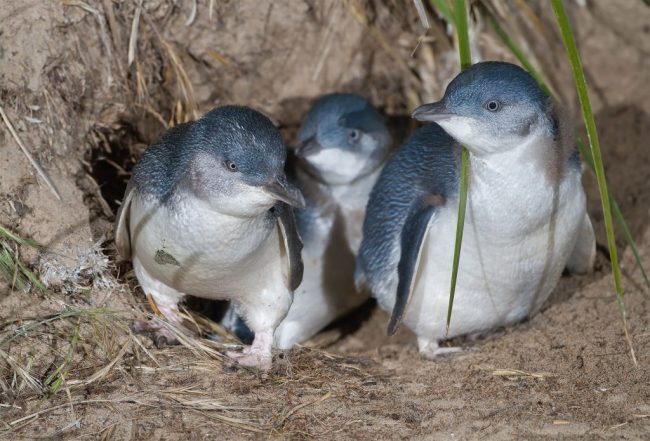Animals in the world follow their regular diet, which provides high nutrition, and keep them healthy — Penguins food dependant on the habitat nature that they have adapted and also on the availability of the food in the area, they are surviving.
Penguins are flightless, and aquatic birds. They don’t fly in search of food; instead, they swim underwater to hunt the prey. They adapted a marine lifestyle, so they always live beside the sea. They feed on small fish, krill, squid, and other tiny aquatic organisms because the availability of this seafood is abundant under deep water.
Theses available seafood are rich in nutrition provides energy and protein. Protein is essential, and fish are a high source of protein seafood. So penguins mostly feed on fish.
How much fish do penguins eat a day?
Quantity of food intake depends upon the penguin species. Larger species of the penguins intake more food, and smaller species intake quantity will be less.
For example, emperor penguins’ largest species among all, the regular diet will be around 2-5 kg of fish per day. Still, during the period of premolt, they consume six kilograms,i.e., 13 pounds of fish every day. Little penguins, the smallest species among all consume 25% of their body weight, i.e., approximately 250 gm per day.
What kind of fish do penguins eat?
Each penguin species feed on the type of fish or food available in their habitat.
Great Penguins
Since king and emperor are the largest penguin species among all, so they belong to the group named ‘great penguins.’ Their hometown is subantarctic islands, as well as the Antarctic. Both species feed upon the fish, especially the lantern fish. About 80-100% of the penguin’s diet consists of fish.

These two are deepest divers among all. However, emperor penguins eat fish along with crustaceans and cephalopods. Instead of crustaceans and cephalopods, king penguins compensate with krill. During the winter, the consumption of fish reduces to 30%.
Little Penguins
White-flippered penguins and little blue penguins belong to this group. Little blue penguins are also known as fairy penguins. These two species are the smallest among all the penguins, so they are called little penguins.

These two species survive in the coastlines of Australia, and New Zealand. Dependant on fish, squid, and other small aquatic organisms for food. They don’t dive deep underwater to hunt; the range is around 2-5 m deep.
Brush-tailed Penguins
Adelie penguins, gentoo penguins, and chinstrap penguins belong to this group. These penguins are also named Pygoscelis species. Because of the presence of stiff feathers and brush sticks like tail, they are called brush-tailed penguins. These penguins hometowns are islands of Antarctic, subantarctic, and southern pacific.

These penguins’ main diet is fish like silverfish, Antarctic krill, and glacial squid. Fish consumption of these penguins depends upon availability. If fish are abundantly available then they eat 50% of the regular diet, if they are less, then the consumption decreases to 15%. The availability of fish depends on the places they hunt.
Banded Penguins
This group consists of four penguin species they are, African, Magellanic, Galapagos, and Humboldt penguins. These groups of penguins are also named ‘jack-ass’ penguins because of their loud calls which sounds like donkey brays. These groups of penguins have black spots on their bellies, black beaks, small skin patches around eyes-either white or pink.

These penguins sustain in the coastlines of South America and Africa. These penguins feed on small fish like sardines, cuttlefish, squid, and other crustaceans. African penguins added two more menus in their regular diet. They are pilchards and anchovies.
Crested Penguins
This group has a large number of penguin species like macaroni penguins, royal penguins, Fiordland penguins, snares penguins, the southern rockhopper penguins, the northern rockhopper penguins, erect-crested penguins, and Chatham Island penguins. These crested penguins have feathers on the black and white plumage. They have red beaks, yellow crests.

Their calls are more composite than others. The most royal penguins have a white face, and the rest of the species have blackface. They breed on subantarctic islands, and they feed on small fish, crustaceans, squid, krill, octopus, and other tiny aquatic organisms.
Yellow-Eyed Penguins
As names indicate, this group consists of only yellow eyed-penguins. This species of penguins live in New Zealand. These penguins’ regular diet consists of 90% of small fish and as well as arrow squid.

Conclusion
Finally, we can conclude that every species of penguins depend upon the fish for food, due to their rich nutrition or protein to get more energy. Every group of penguin species has different diets based on the region that they are living, and the availability of food.
Reference:
https://www.quora.com/Why-do-penguins-eat-fish
A Marine Diet: What Do Penguins Eat?